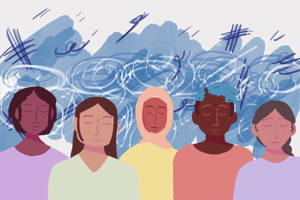Love Supreme Soul Stir for Tyree Nichols & Half Moon Bay Victims February 1, 2023 at 5:00 AM by...
Top 5 Tips for School Leaders & Educators in Creating Inclusive Learning Spaces for BIPOC & LGBTQIA Youth

Creating an inclusive and welcoming classroom or school for BIPOC (Black, Indigenous, and People of Color) and LGBTQIA (Lesbian, Gay, Bisexual, Transgender, Queer, Intersex, and Asexual) students is essential for ensuring that all students feel safe, valued, and supported. However, it can be challenging for teachers and principals to know where to start. In this post, we will discuss some advice, resources, books, tips, and legal guides that can help.
1. Educate yourself and your staff
The first step in creating an inclusive and welcoming classroom or school is to educate yourself and your staff about issues related to BIPOC and LGBTQIA students. There are several resources that you can use to learn more, such as:
· The National Education Association’s (NEA) LGBTQ Resource Page: This page provides a wealth of resources, including lesson plans, books, and webinars, to help educators create a safe and inclusive environment for LGBTQIA students.
· The Southern Poverty Law Center’s (SPLC) Learning for Justice Program: This program offers free resources to educators, including lesson plans, webinars, and professional development opportunities, to help them promote diversity, equity, and inclusion in their classrooms.
· The National Conference for Community and Justice (NCCJ): NCCJ offers a variety of training programs and resources that can help educators create inclusive and welcoming classrooms and schools.
2. Adopt/Create an inclusive curriculum
One way to create an inclusive and welcoming classroom or school is to ensure that the curriculum is inclusive of all students. Here are some tips:
-Adopt curriculum materials from organizations like the Massachusetts Commission on LGBTQ youth that are inclusive of diverse perspectives in your teaching materials, such as literature and history books that showcase a variety of cultures and identities.
- Incorporate LGBTQIA history into your curriculum. Check out this resource from Facing History that provides lessons from over two millennia that highlight LGBTQIA individuals who have made significant contributions to society.
- Use inclusive language in your classroom. For example, instead of saying “boys and girls,” use gender-neutral terms like “students” or “scholars.” GLSEN has an 8-page pdf of resources, tips, and strategies to support educators and school leaders with appropriate inclusive language and more.
3. Support student-led initiatives
One way to create a more inclusive and welcoming environment is to support student-led initiatives that promote diversity, equity, and inclusion. Encourage students to form clubs or groups that celebrate different cultures and identities. You could also support LGBTQIA student groups by providing a safe space for them to meet and share their experiences.
If you are interested in launching a Gay-Straight Alliance or a Gender Sexuality Association, here are the tips to forming a sustainable model that will make a positive impact:
· Get Leadership Allyship & Buy-In from your Principal/Head of School as well as your Parent Teacher Association.
· Find Faculty Sponsor(s).
· Develop a mission, vision, and goals for why this group is important.
· Promote and gain membership.
· Meet and make an impact!
4. Address bullying and discrimination
Unfortunately, bullying and discrimination still exist in schools. As a teacher or principal, it’s important to address any incidents of bullying or discrimination immediately. Here are some tips:
· Create a zero-tolerance policy for bullying and discrimination.
· Provide training for your staff on how to identify and address incidents of bullying and discrimination.
· Encourage students, staff, and parents/caregivers to speak up if they witness bullying or discrimination, and ensure that they feel safe and supported when doing so.
5. Know your legal responsibilities
Finally, it’s important to be aware of your legal responsibilities as a teacher or principal. In Florida, there are several laws and policies that protect the rights of BIPOC and LGBTQIA students. Here are some resources that can help:
· The Southern Poverty Law Center
· Americans Civil Liberties Union
· GLSEN
· U.S. Department of Education
In conclusion, creating an inclusive and welcoming classroom or school for BIPOC and LGBTQIA students requires effort, education, and commitment. By using the resources, tips, and legal guides outlined in this post, teachers and school leaders will create life-saving and life-giving spaces that will empower all of our youth and adults who stand with them to thrive.



